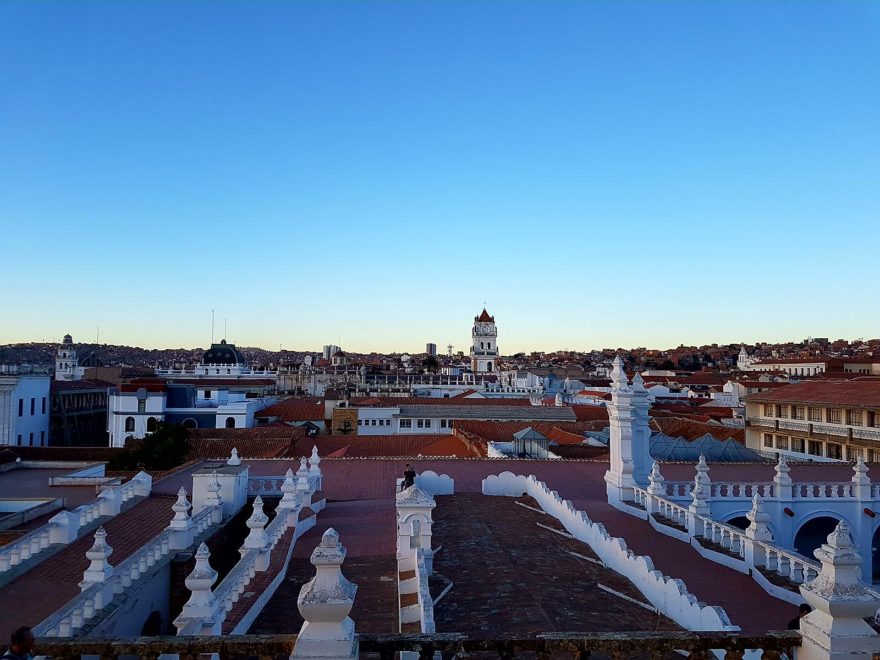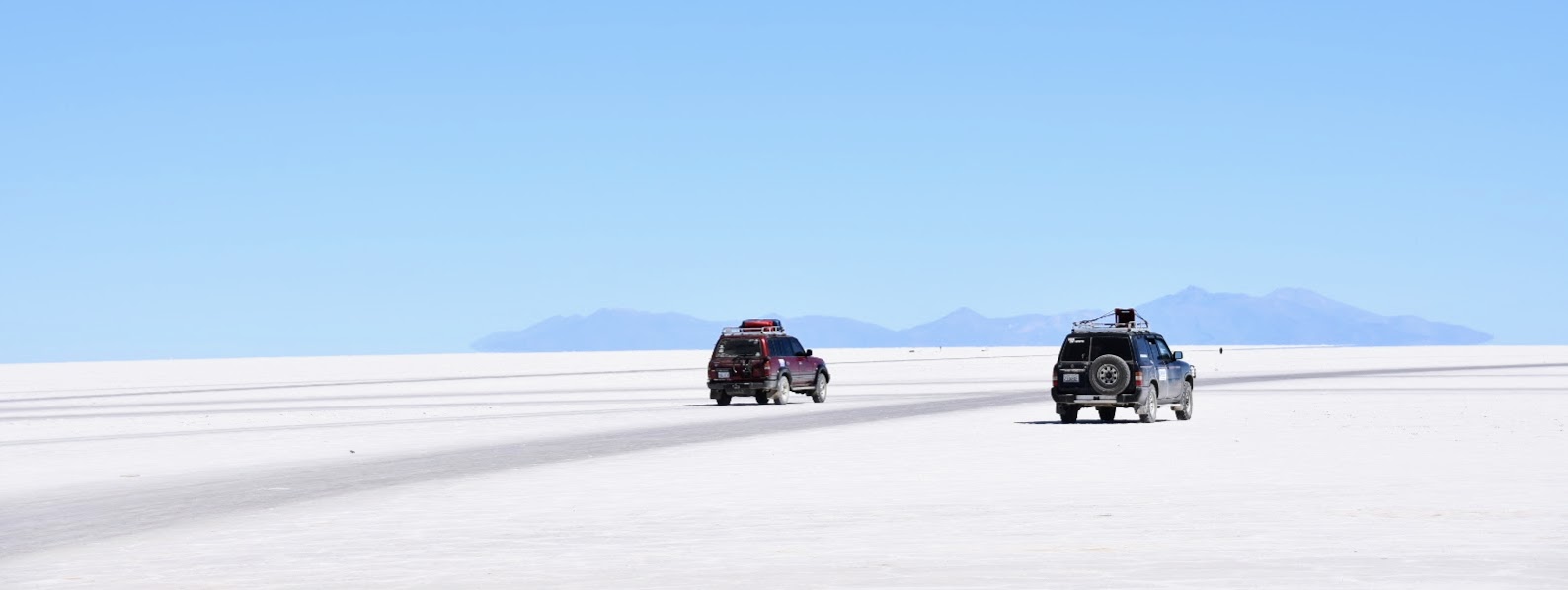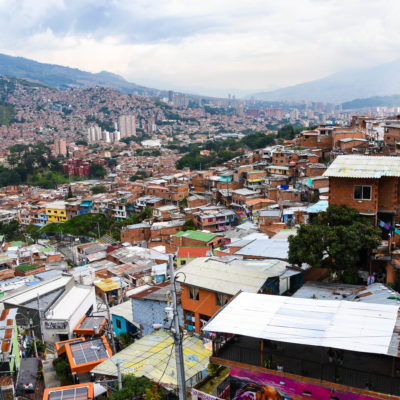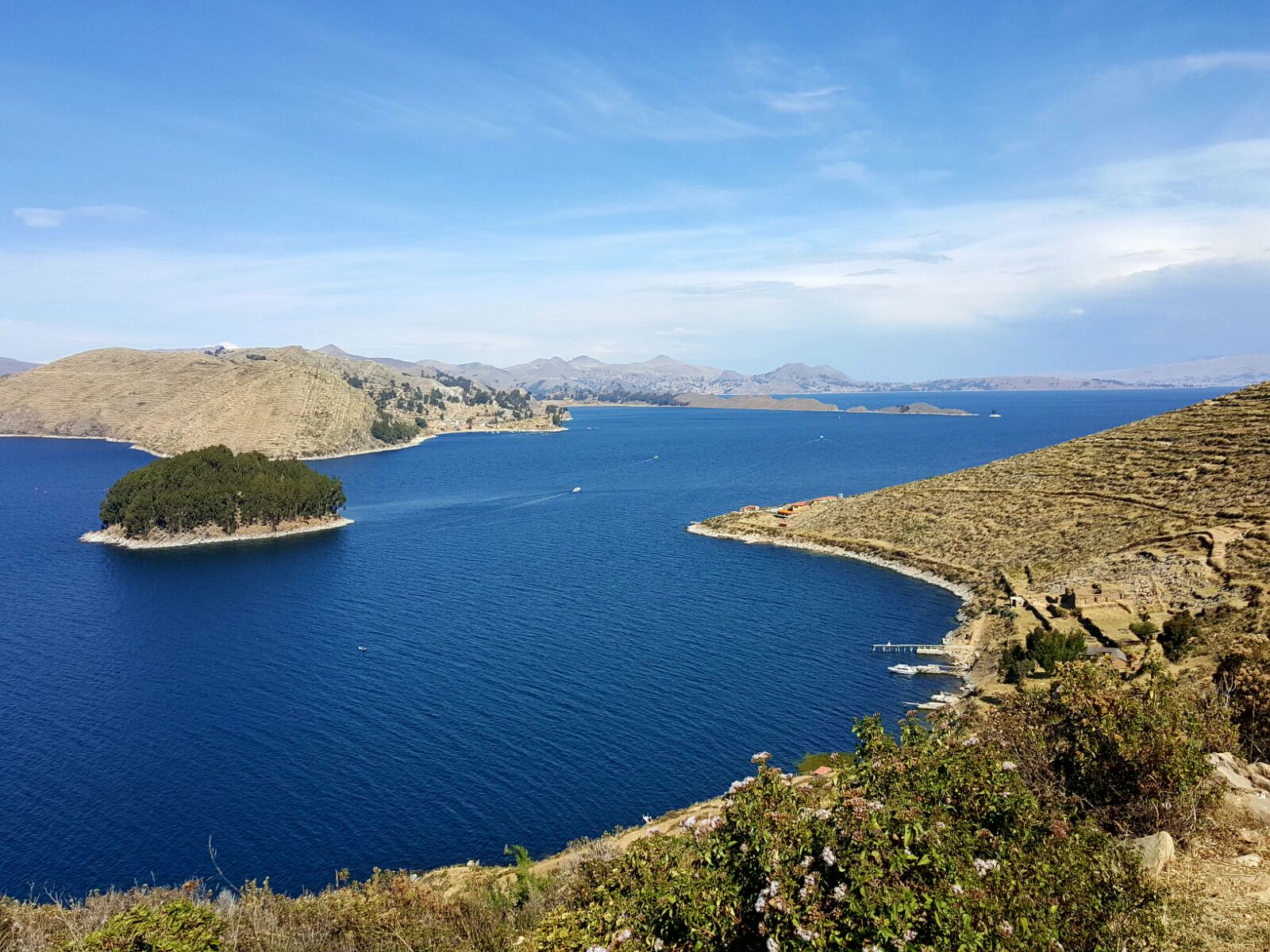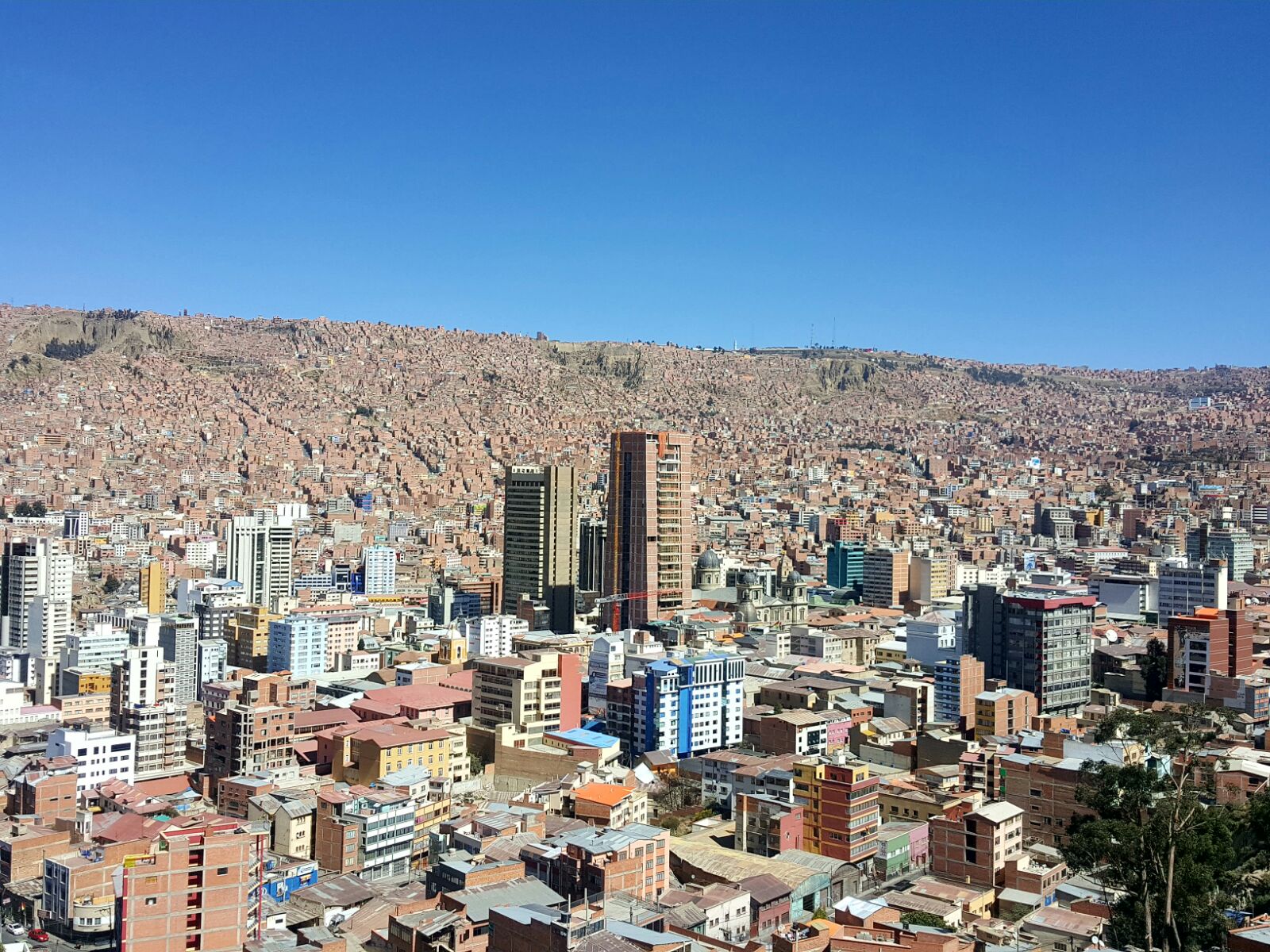Sucre is the official capital of Bolivia and one of its prettiest cities. In fact, from what we read and heard from other travellers it is one of the prettiest and nicest cities in South America. It didn’t take us long to fall in love with this White City (so called because of its beautiful white colonial buildings) and its people. We spent three weeks here, the longest of any one spot we have visited this year, but could have easily stayed longer.
There were a few reasons we chose to start our South American adventure in Sucre, although geographically landlocked Bolivia would be an unusual choice with most travellers starting either at the bottom or the top of the continent, depending on the season, and working their way up or down. Firstly, we were keen to learn some Spanish and Sucre is famous for its good and cheap Spanish schools (and the Bolivian accent is much easier to understand than in other countries in South America). Secondly, Bolivia is one of the cheapest countries in South America (which unfortunately makes it also the poorest) so we knew it wouldn’t break our budget. Finally, although it’s winter this time of year in South America, Sucre has a moderate climate. Whilst, the mornings and nights were chilly, the days were 20 plus degrees celsius and practically everyday we awoke to sunshine and clear blue skies.
Accommodation
As we had planned to stay for at least two and a half weeks, we rented an apartment via Airbnb. The place was huge and had everything we needed: a fully equipped kitchen; washing machine; a good hot shower (which can be difficult to find in Bolivia); free drinking water (supplied by the very helpful and friendly owner when we needed it); HBO (for us to watch Game of Thrones), great Internet (again hard to come by in Bolivia); and a roof terrace where we could catch some rays and dry our clothes. All for only $USD20 per night!
The apartment was located at the top of a hill very close to the Mirador, a beautiful view point and one of the main attractions in the city. Sucre’s main plaza, Plaza de Mayo 25, was about a 15 minute walk down hill. Walking up wasn’t too difficult and made for good exercise, although we were a bit out of breath in the first couple of days. At 2,800 meters above sea level Sucre isn’t Bolivia’s highest city but it still took us a couple of days to acclimatise.
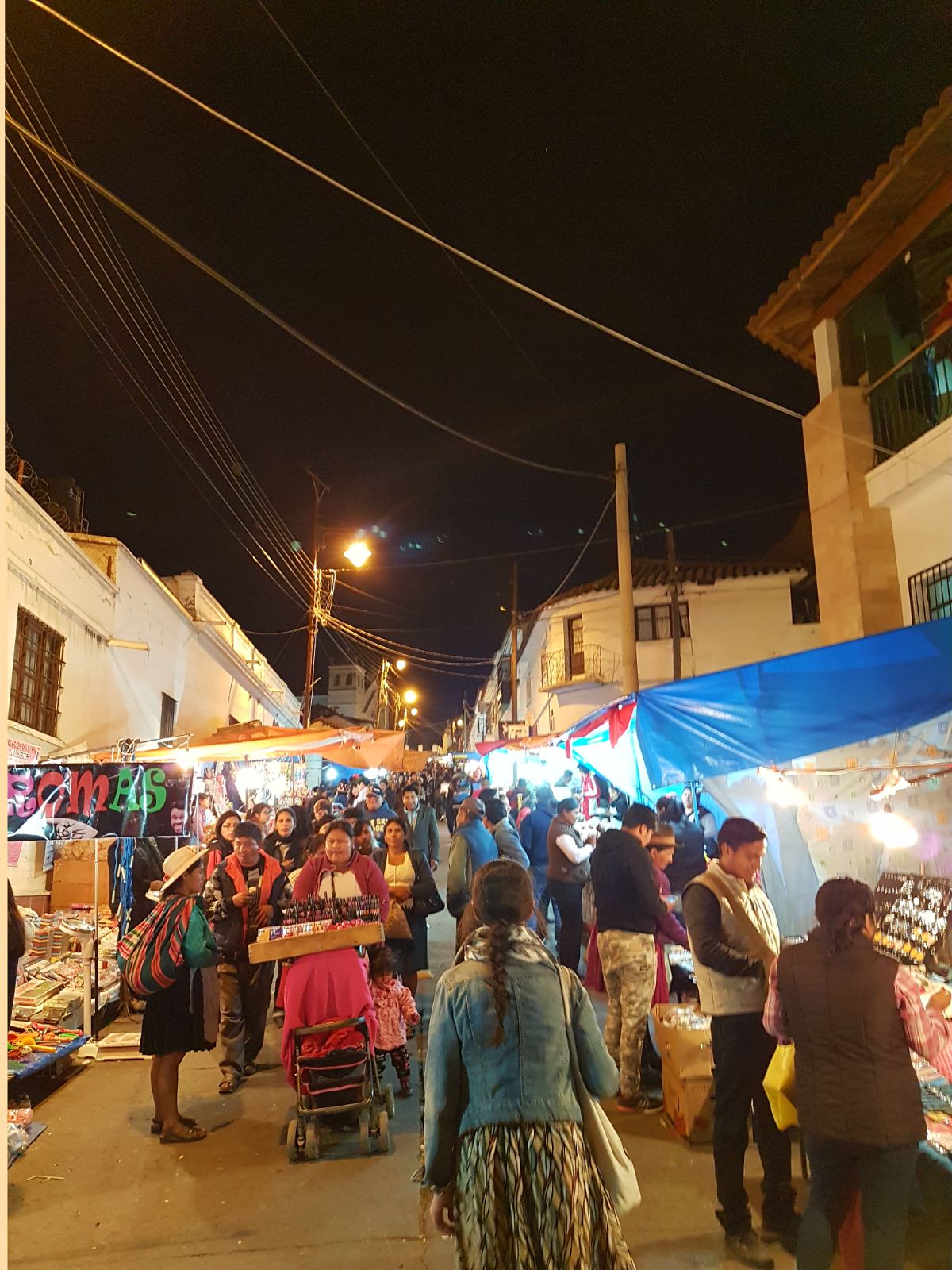
Spanish School
We started our Castellano (Latin American Spanish) lessons at Fenix Language School a couple of days after arriving in Sucre. We quickly settled into a good routine – Castellano lessons 9am to 1pm, lunch, homework and from our second week teaching English to a group of locals from 5-7pm. It was great to use our brains again and it felt like we had jobs – but jobs that we loved. Fenix turned out to be a great choice, we really met some of the nicest people – both locals and other students. Apart from lessons the school organises weekly cooking classes (with games of crazy uno), walley (which is similar to volleyball but you can use all parts of the body as well as the walls) and soccer games. The school also has volunteering opportunities such as teaching English or volunteering within the community. Grover, one of the teachers at the school and one of the nicest guys you’d ever meet, organised activities in his spare time and took us to Alasitas (the fair near our house) and to independence day celebrations. I’m not sure if he ever had time off. Last but not least, our profesora Tatiana was excellent. She not only taught us Spanish but told us about life in Bolivia and Sucre and gave excellent restaurant recommendations. She was patient, tough and had a great sense of humour. Our classes were filled with laughter but we also had in-depth discussions (in Spanish!) about poverty, discrimination, the environment and politics.
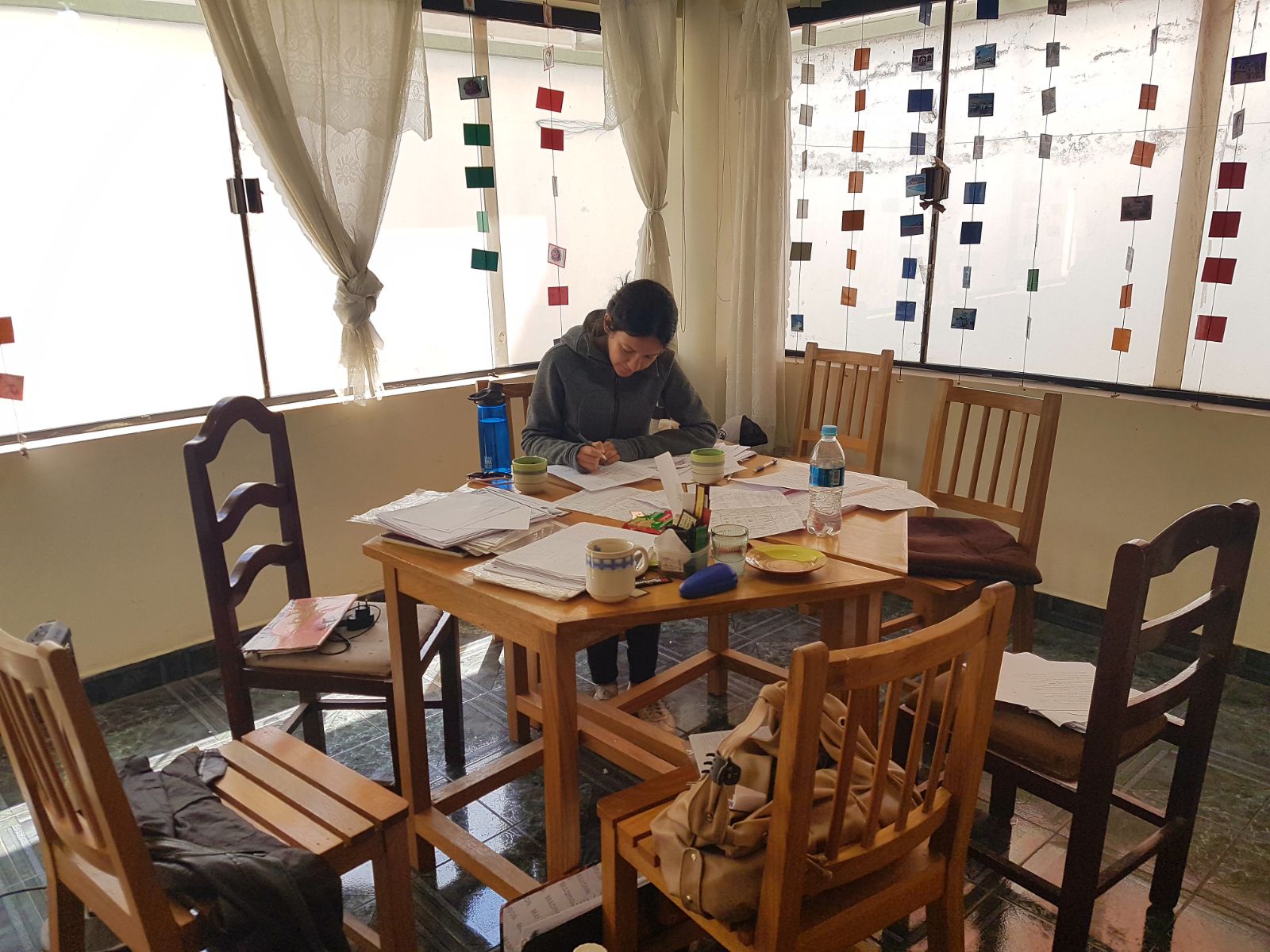
In our last Spanish class Tatiana gave us beautiful leather cuffs made by her and her mother and our English students surprised us with a dinner they cooked and a lovely card. We felt that we were part of a beautiful small community and it was quite emotional to leave. All in all Fenix was an excellent school and I cannot recommend it highly enough. We paid 40 Bolivianos each per hour (less than $USD6) for private lessons – amazing value!
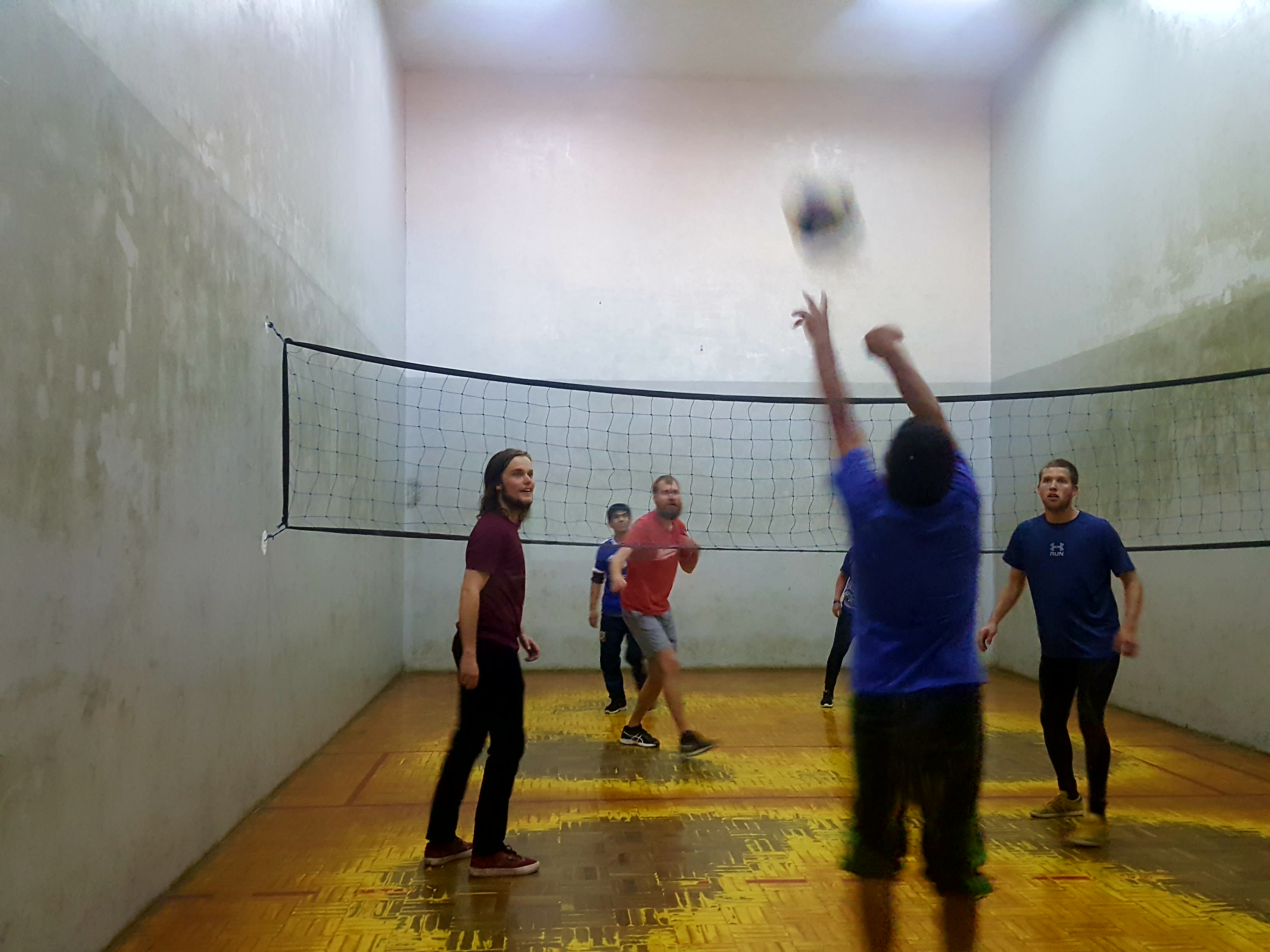
Studying was difficult – Spanish is difficult! Between having to conjugate verbs, remember three different past tenses (why are there so many?!), and work out which nouns are masculine and which are feminine it was all quite frustrating and overwhelming at times. But at the same time also extremely rewarding, for example one night at a little house party organised by a fellow student we managed to explain the Monopoly cards game in Spanish (well Spanglish and a lot of hand gestures) to one of our local friends.
Teaching English was also an interesting experience and required a bit of prep – when you speak a language fluently you forget all the rules or in my case a lot of them I didn’t know in the first place. To add to the challenge the students in our class were mixed level, with some quite advance but others only speaking a few words. But it worked and we had a lot of fun!
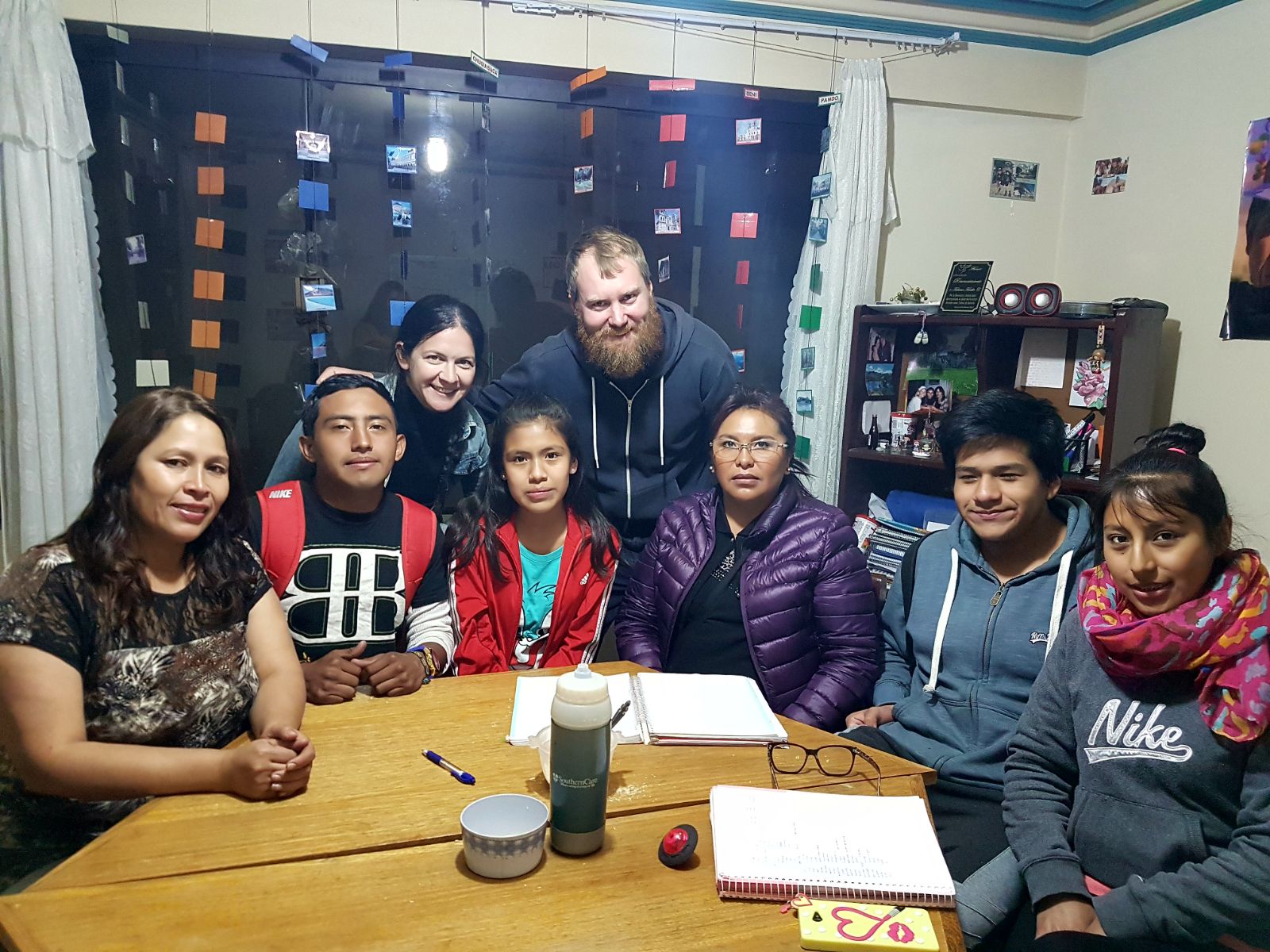
Whilst it was low season in Sucre and Fenix seemed very quiet at first it gradually started filling up and we met some cool people. This included Declan, a young Aussie guy from Melbourne, whose claim to fame was eating over 35 bananas over four or five days. Bananas are very cheap – you can buy a dozen from the market for five or six Bolivianos (less than one USD) but I can’t imagine that eating this many would be good for you! We also met Clare, a lovely medical student from the US who hosted the house party and joined us for a weekend in La Paz (more on that in a later post). So it was not all study and teaching and we had some fun nights out including to Kultur Berlin, a popular nightclub for backpackers, where we partied till 4am (still got it!).
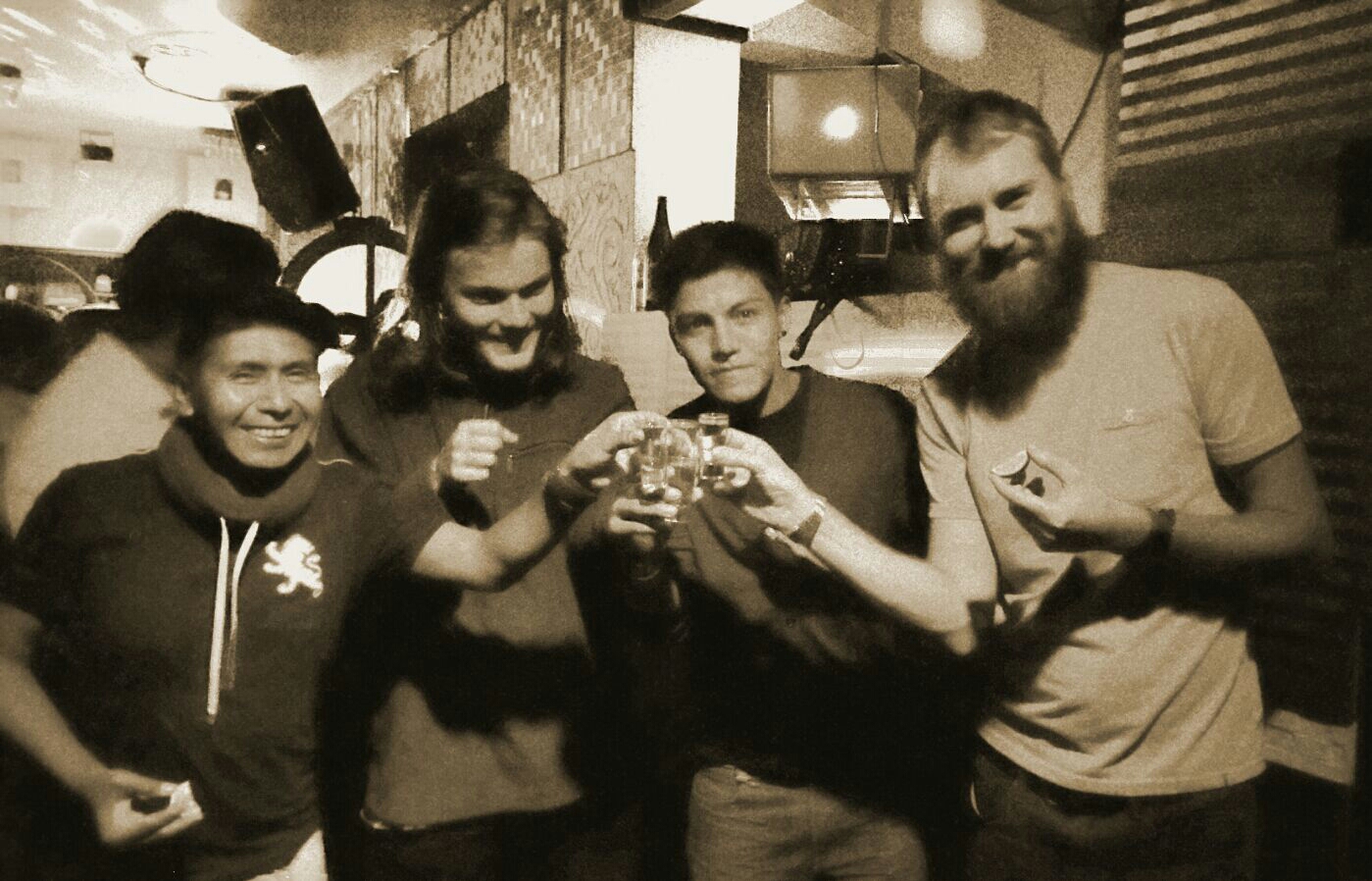
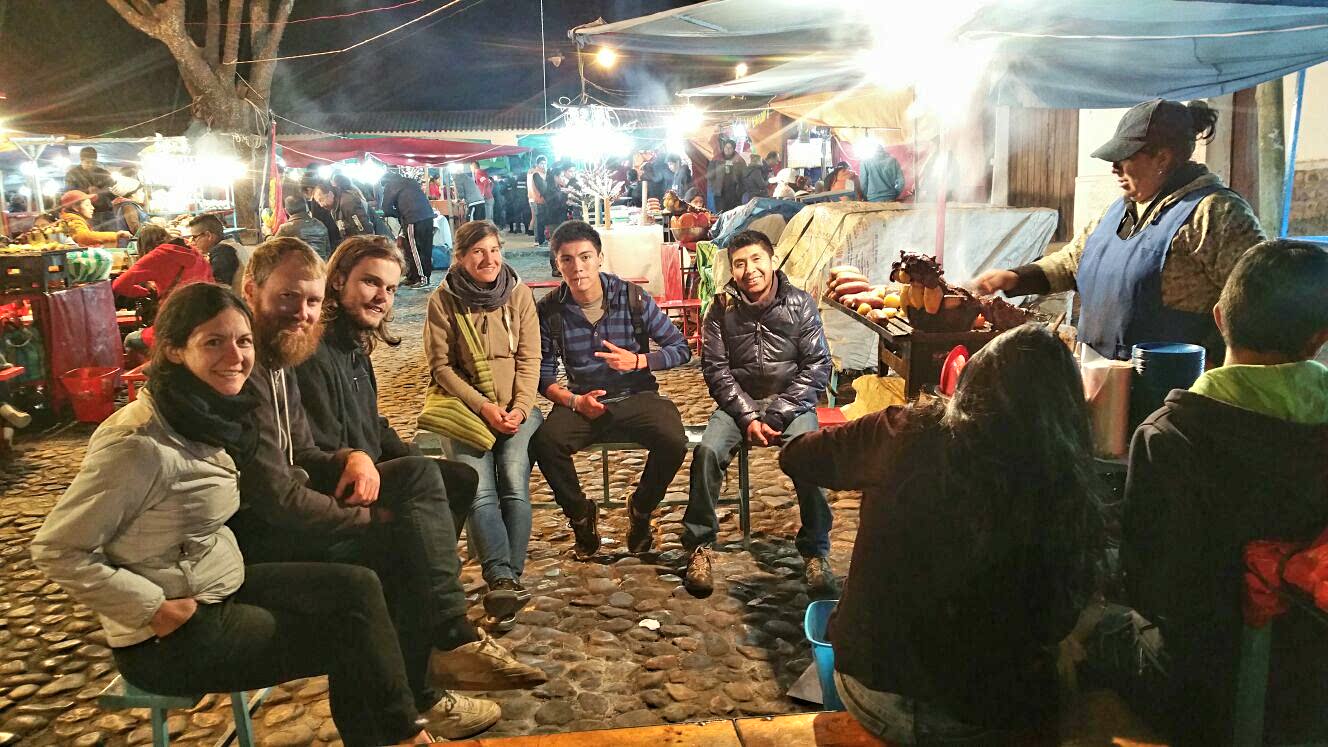
Food and Restaurants
Sucre has many restaurants and cafes but we seem to be creatures of habit these days so after finding some favourites we kept coming back to them. For good coffee we went to Metro, which was conveniently located on the way to school and was the best coffee we found in town. For lunches we seemed to alternate between Papavero and Condor Cafe. Papavero was a recommendation from our teacher and was by far my favourite – set in a beautiful building with views of the main square, it was very fancy and had awesome food for great value. The three course menu del dia was usually either 25 or 28 Bolivianos (about $USD4). Condor meanwhile was the main travellers’ haunt serving delicious vegetarian food (which is not that easy to come by South America) – we loved the falafel. Cafe Monterosso was great for simple home cooked Italian food and a glass of wine, although we only tried it once. We also liked Cafe Restaurant Florin for their interesting version of the pad thai, the quinoa burgers and craft beers (although they ran out of our favourite IPA). Finally, for saltañas we went to Il Patio. Saltañas are rolls usually filled with meat or chicken which are traditionally eaten for breakfast. We loved the chicken ones!
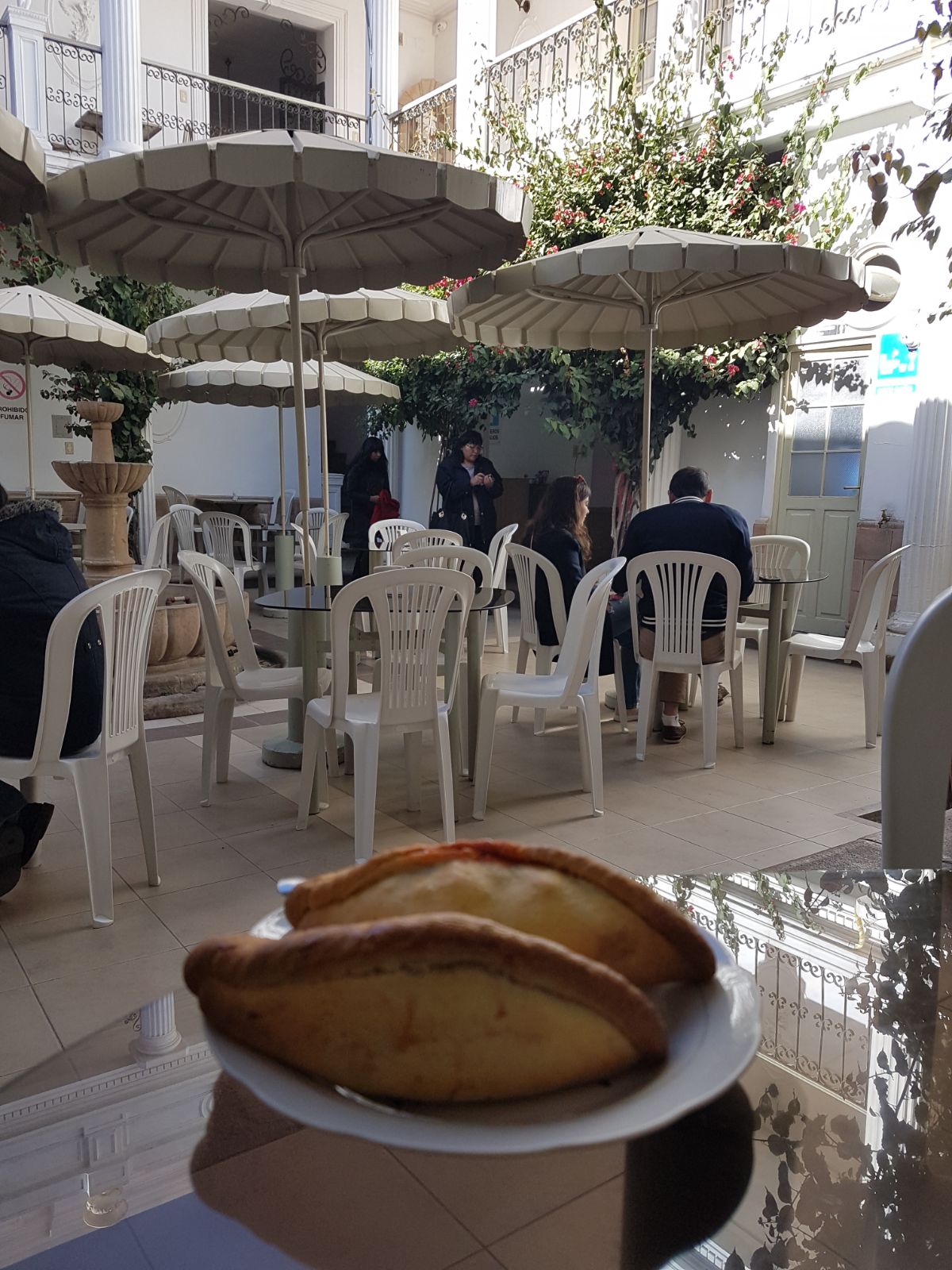
Apart from eating out we enjoyed cooking at home and shopping at the local markets. Sucre has two main markets – the Mercado Central (the more central and touristy market) and Mercado Campesino (a huge outdoor market spanning a few blocks. It is cheaper than Mercado Central and also includes the witches market). The markets were amazing and we loved browsing the fresh produce. The Mercado Central also has great juice bars and cheap food including yummy chorizo sandwiches.
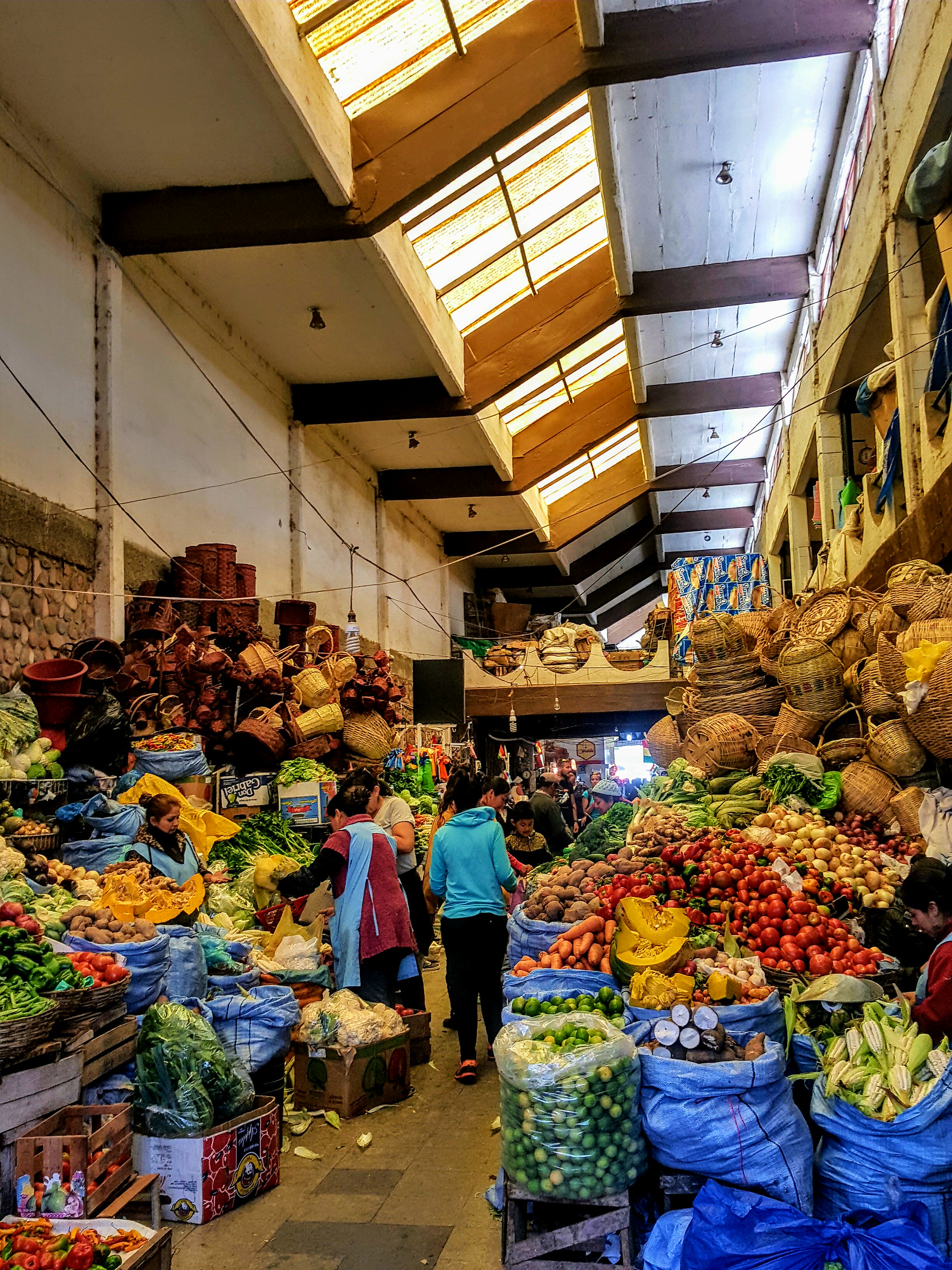
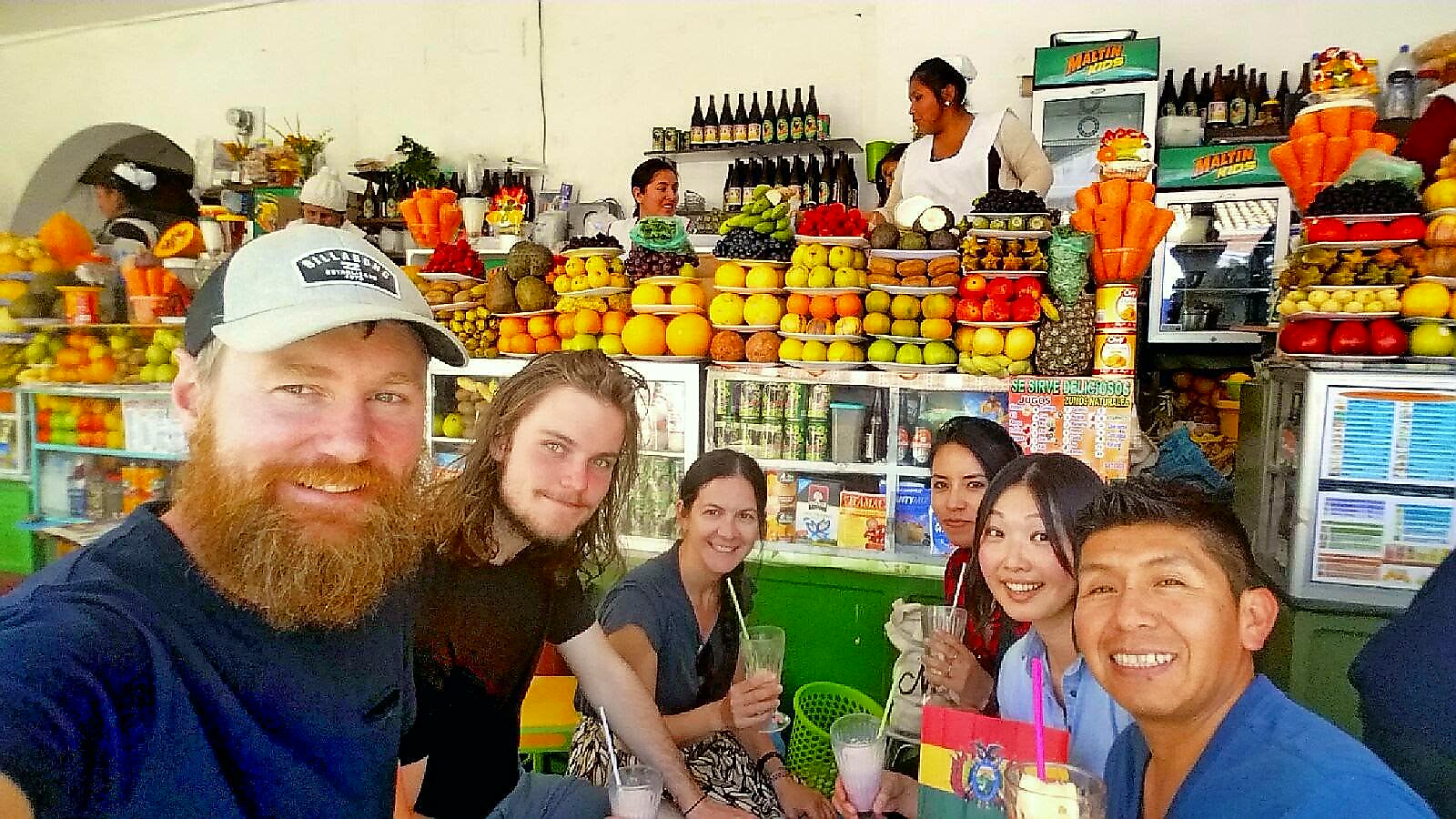
In and Around Sucre
There is always something going on in Sucre. It was not unusual for us to see marching bands during the week on the way to school. We were also lucky to be in Sucre for their Independence Day celebrations on 6 August when streets were blocked off, bands played and stalls serving traditional food were set up. During our time in Sucre we also saw a few peaceful protests throughout the city which as we understand is pretty common occurence in Bolivia.
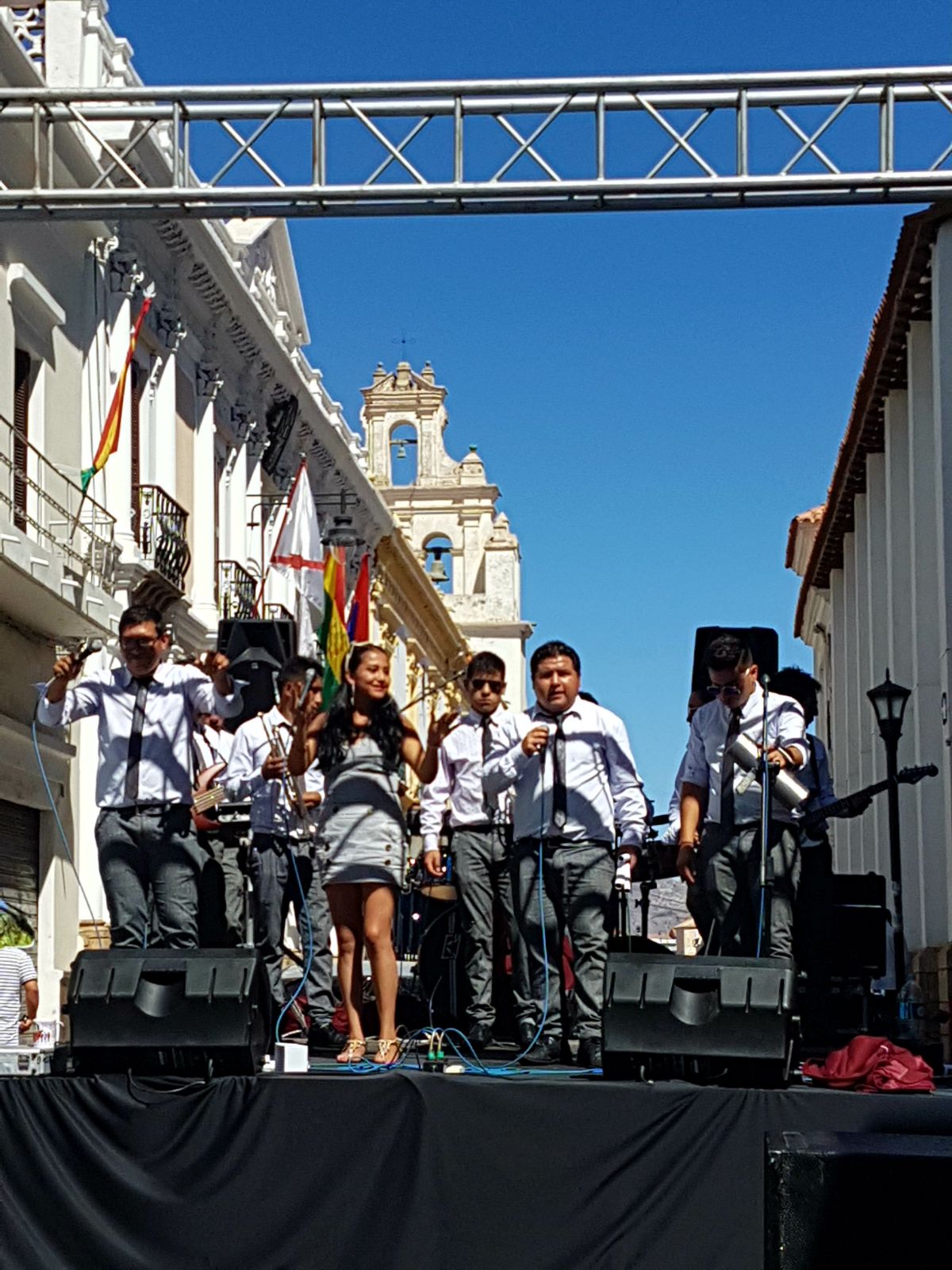
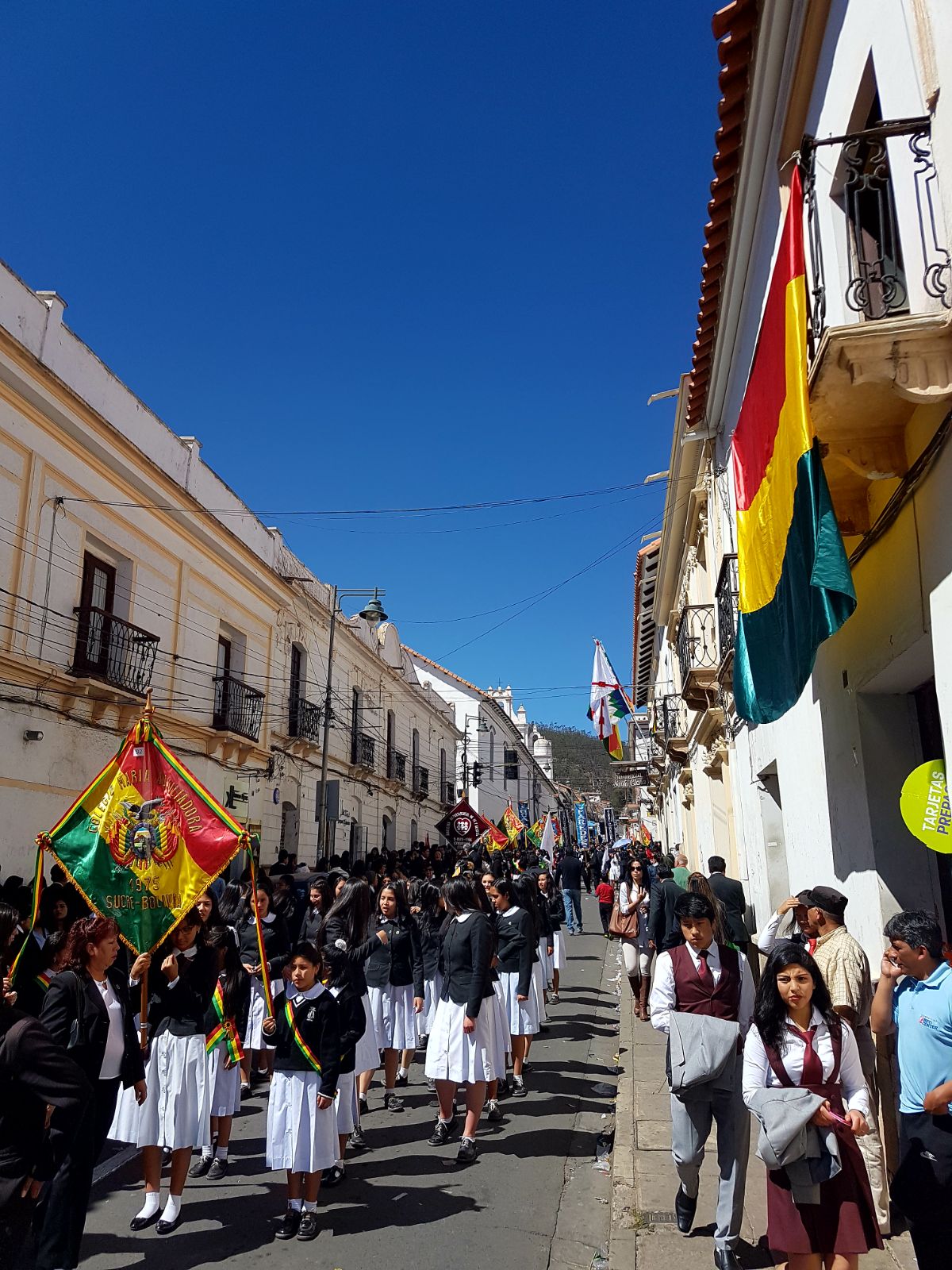
We started our time in Sucre by going on a Walking Tour by Condor Trekker (the same people who own Condor Cafe). The tour was a great way to get our bearings and learn more about Bolivia and the city. Although the tour was fairly expensive, all profits go towards funding local projects.
Bolivia has a huge indigenous population and now has its first indigenous president. It is officially known as the Plurinational State of Bolivia recognising 36 different nationalities. The majority of people in Bolivia are Catholic but at the same time the indigenous communities also exercise their own beliefs and rituals which include the belief in Pachamama, mother nature. The Alasitas festival (which was on during our stay) was centred on the tradition of buying small things such as houses, cars, money and so on following which a ritual is performed and it is believed that you would get these actual things the following year. You can even buy a rooster or a hen which symbolise a boyfriend and girlfriend, respectively.
Apart from learning about Bolivian history and about the indigenous population, the Condor tour also took us to a very local bar where we tried chicha, a local spirit made from maize and sugar – very tasty! The first sip is always poured on the ground for Pachamama.
We also understood that it is legal for children to work in Sucre but that this is regulated with parents having to give permission and specify the type of work. We were in two minds about this – with our Western hats on we are appalled at the idea of young children having to work but on the other hand they have to eat and in the end our view was that it is preferable that they do eat. We also discussed it with our teacher and her view was that working was preferable to begging and that at least this way the children would develop some skills. In the evenings we saw quite a lot of young kids painting pictures of animals on the footpaths, we opted not to give them money but rather bought them fruit from the market. We didn’t know where the money that they receive goes but hoped that they would get to eat the food.
Every morning on the way to school we saw the Zebras – not actual zebras but people dressed like zebras. The zebras were directing traffic, dancing, and talking to drives and pedestrians. When we asked more about this at the school, it was explained to us that the purpose was to educate drivers and create better habits on the road. But whatever their purpose, the zebras definitely brought a smile to our faces on the way to class.
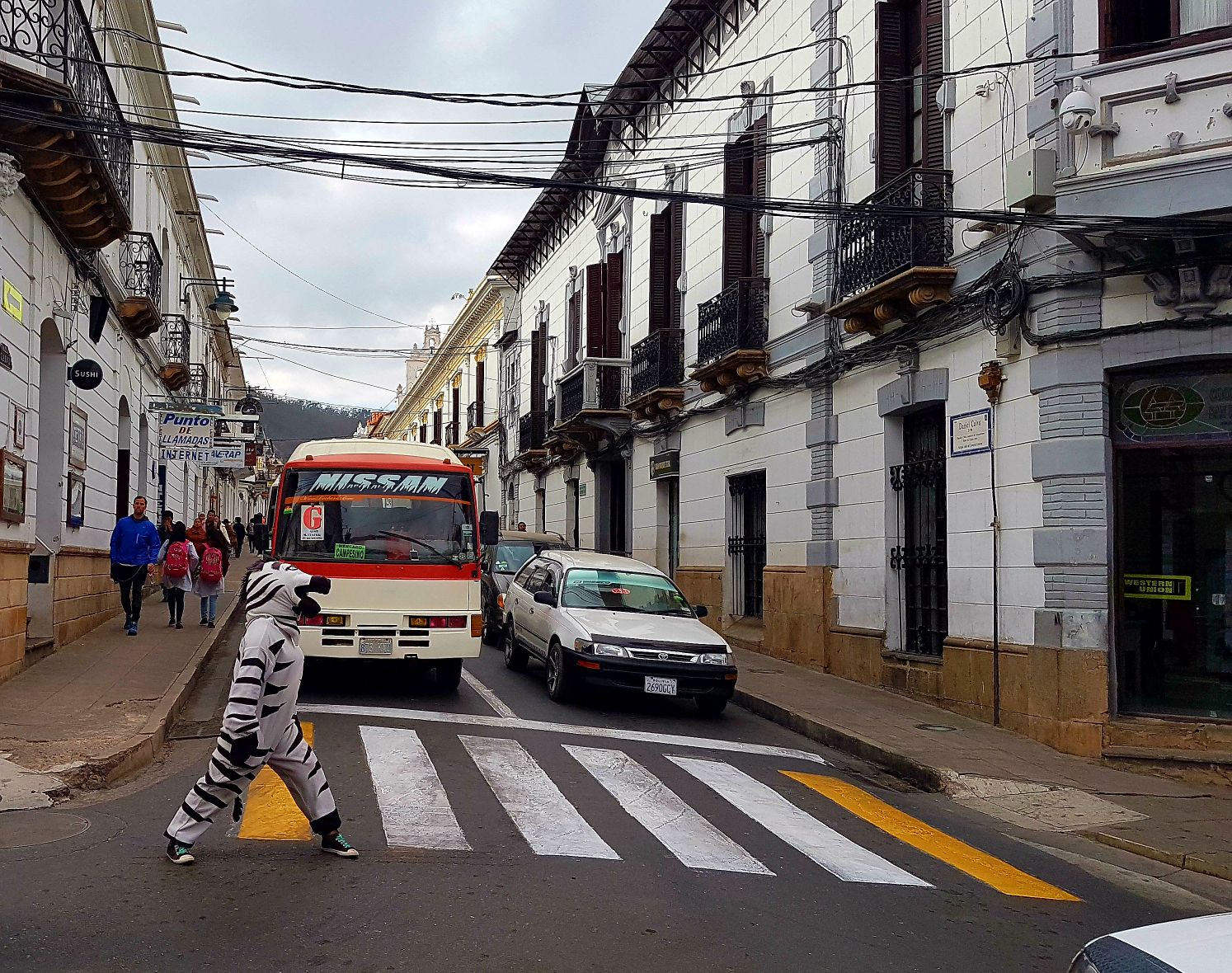
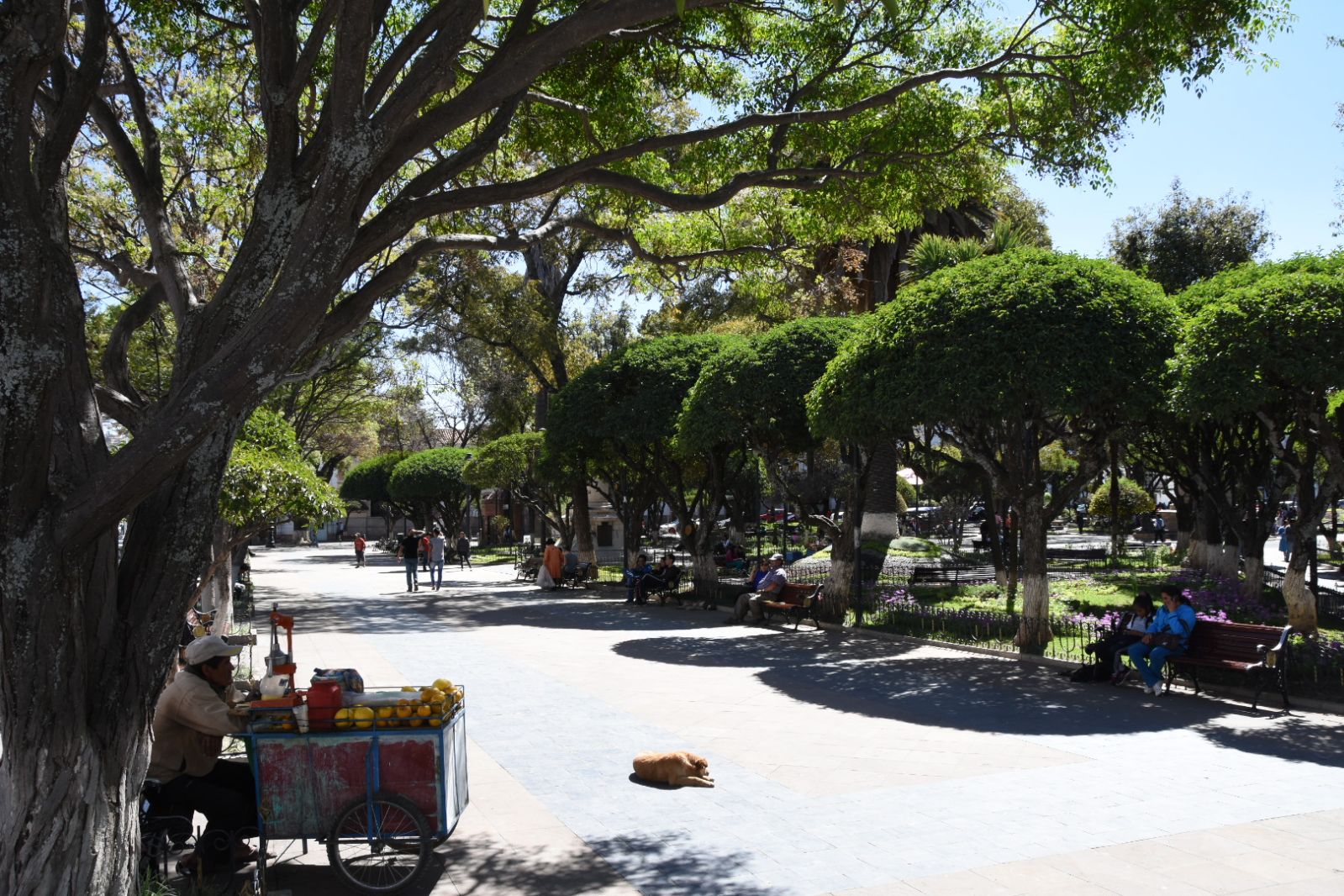
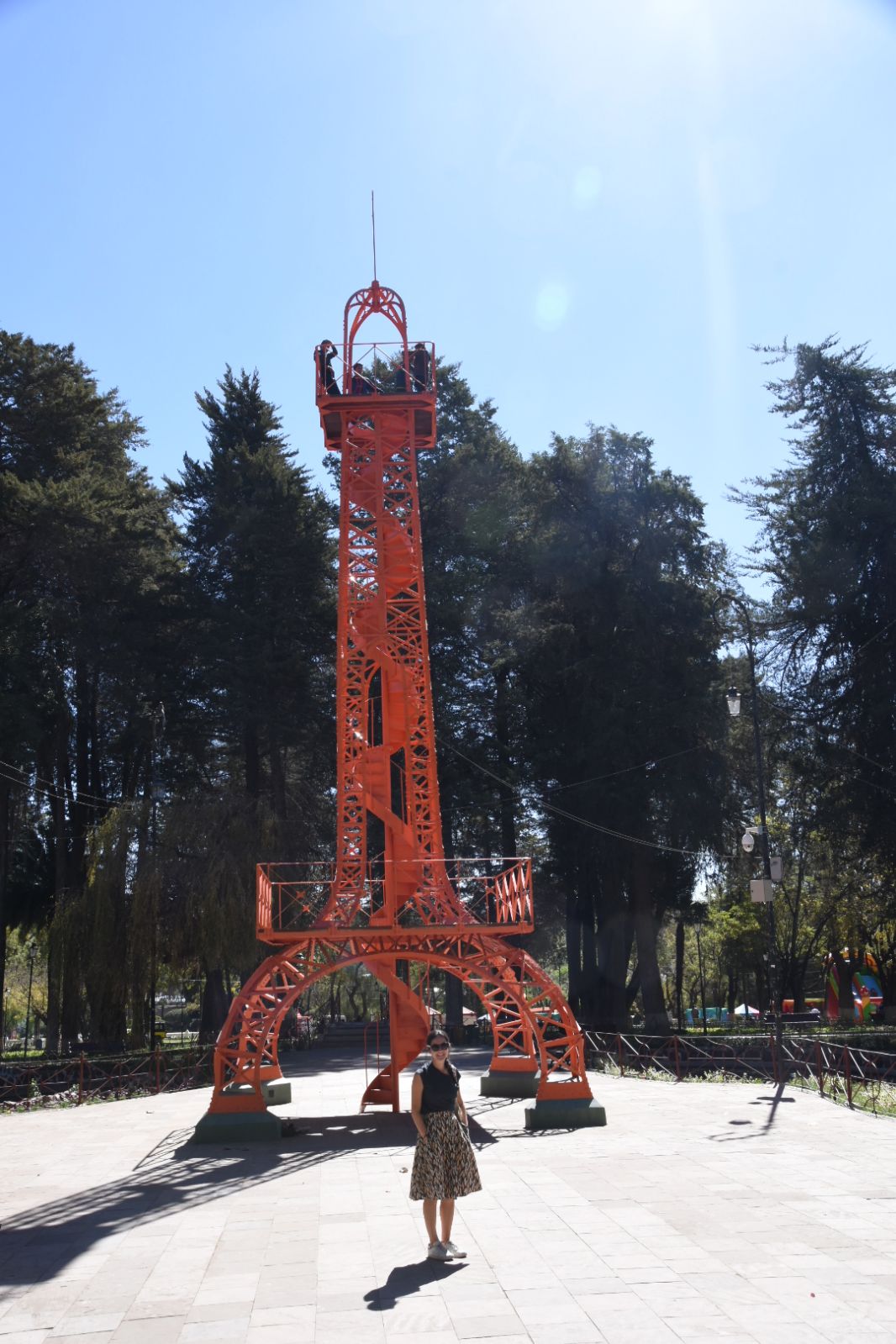
Tarabuco Market is on every Sunday in the small town of Tarabuco which is about two hours’ drive from Sucre. We weren’t sure if it would be our thing but decided we needed to do some sightseeing and at 20 Bolivianos for a return ticket (under $USD3) we didn’t have much to lose.
Tarabuco is home of the Yampara culture with many people wearing the traditional colourful clothing. The town itself is quite tiny consisting of a small plaza and a few streets. If you walk up from the plaza you can get good views of the town and meet some donkeys.
The market itself has pretty much everything from food to clothes. Whilst a lot of the stalls/shops are clearly set-up for tourists the food sections were for all busy with locals and again had beautiful fresh produce. We enjoyed our half day visit but I wouldn’t say it is a must.
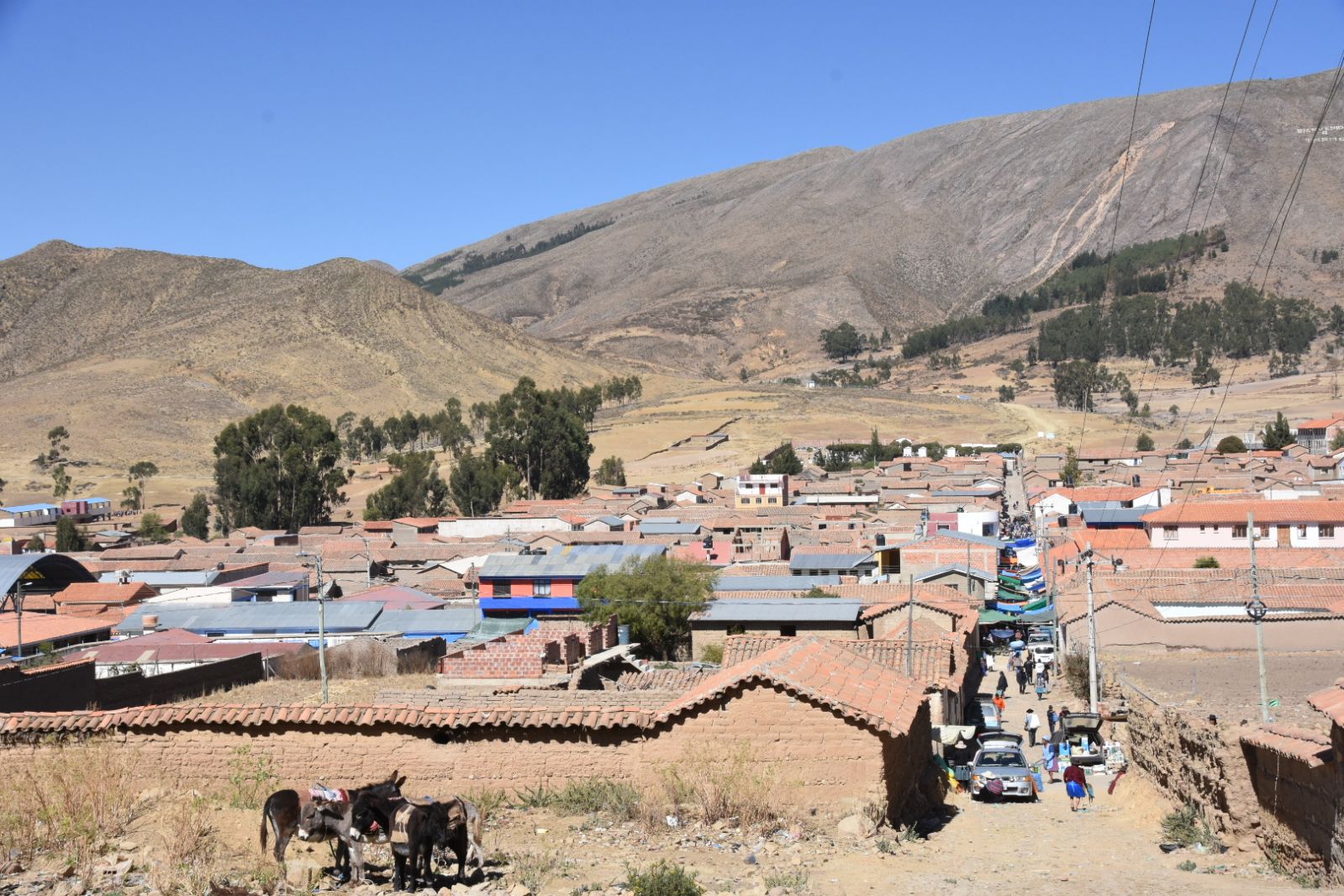
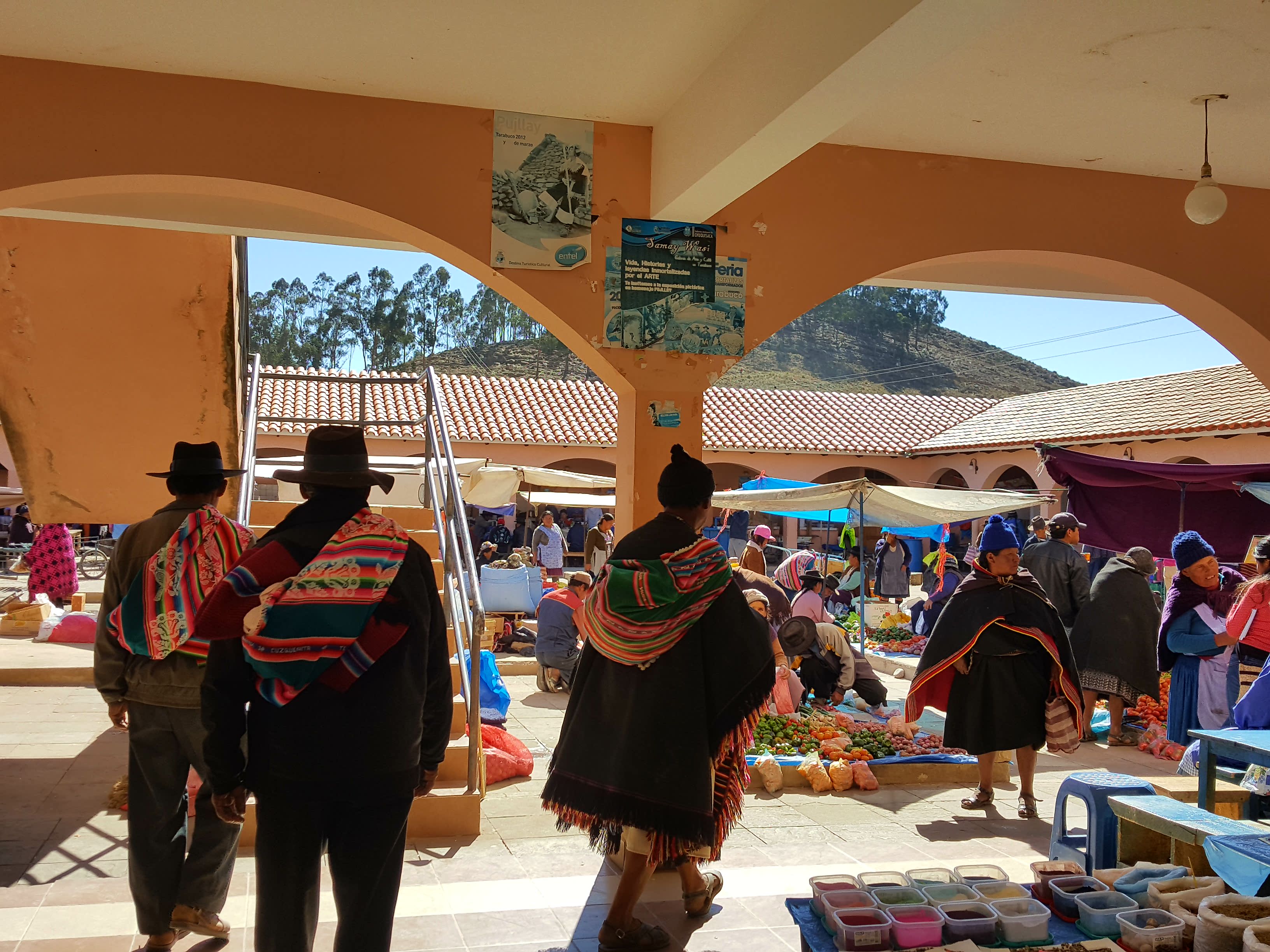
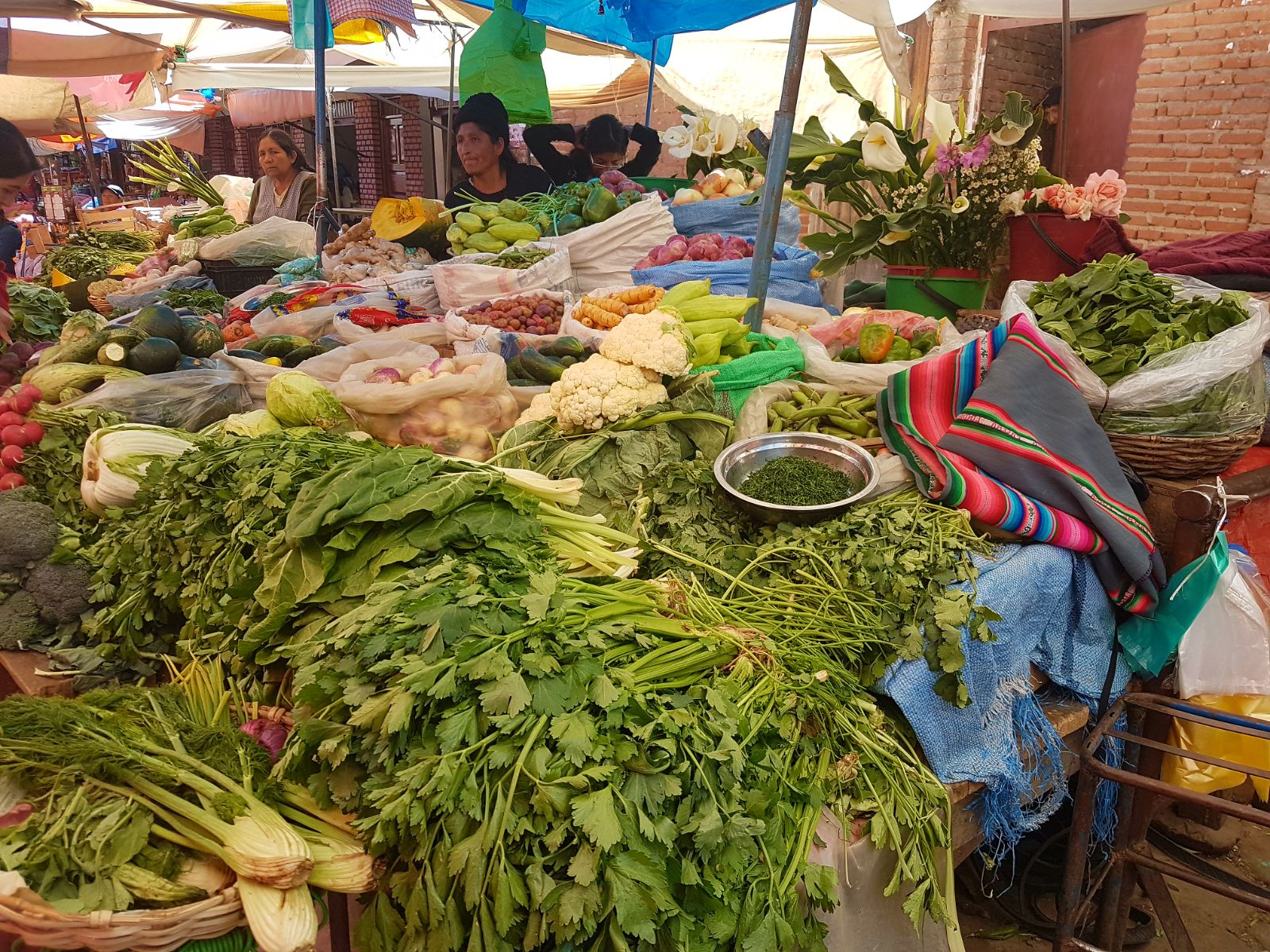
San Felip Neri is a convent in the middle of Sucre with beautiful views from its rooftop. The best time to go up is before sunset, around 5.30pm or so as it closes at 6pm. The entrance to the convent can be difficult to find (you have to ask at the school next door to be let in) and you have to pay 15 Bolivianos (just over $USD2) but it’s worth it. We loved the views and the serenity.
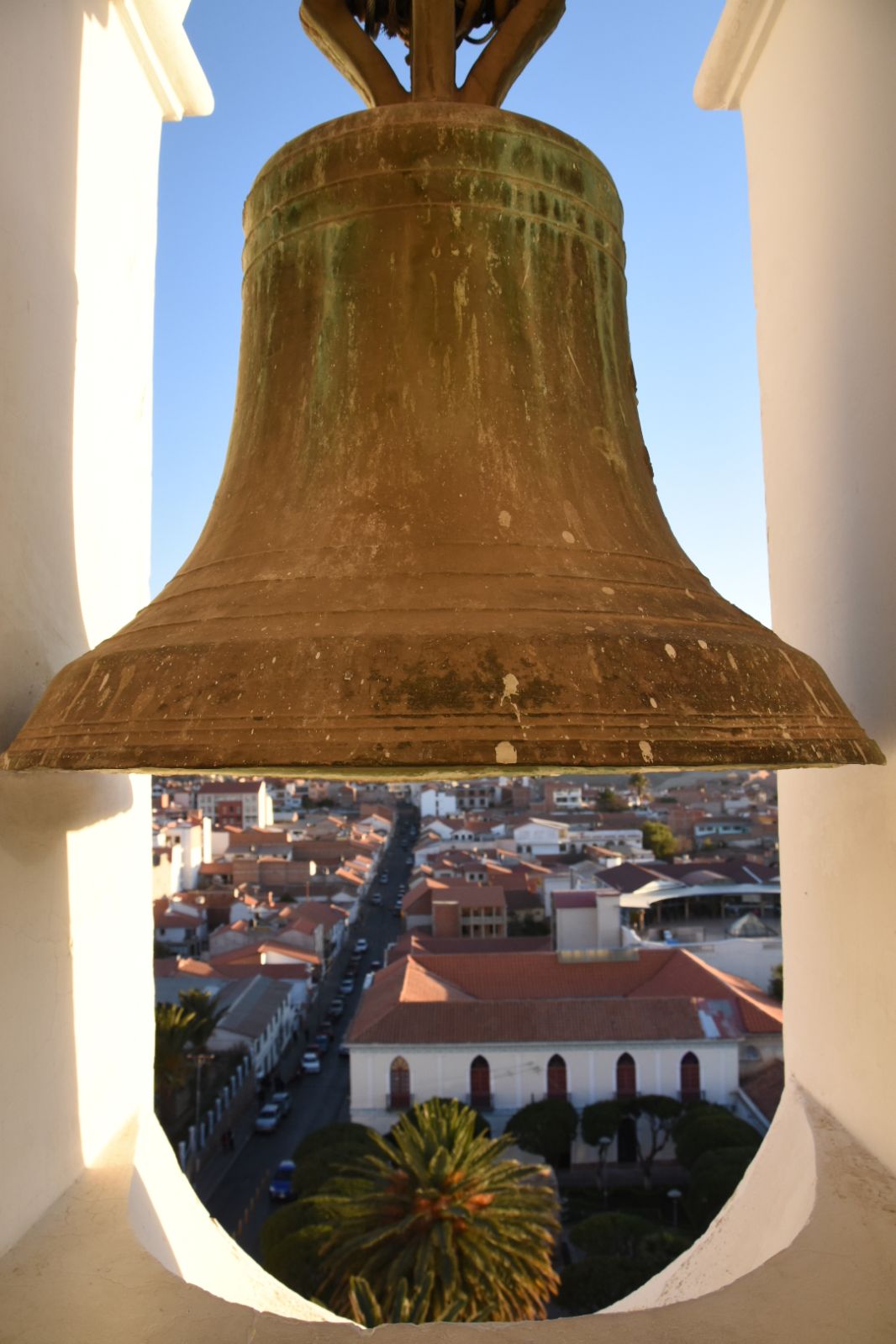
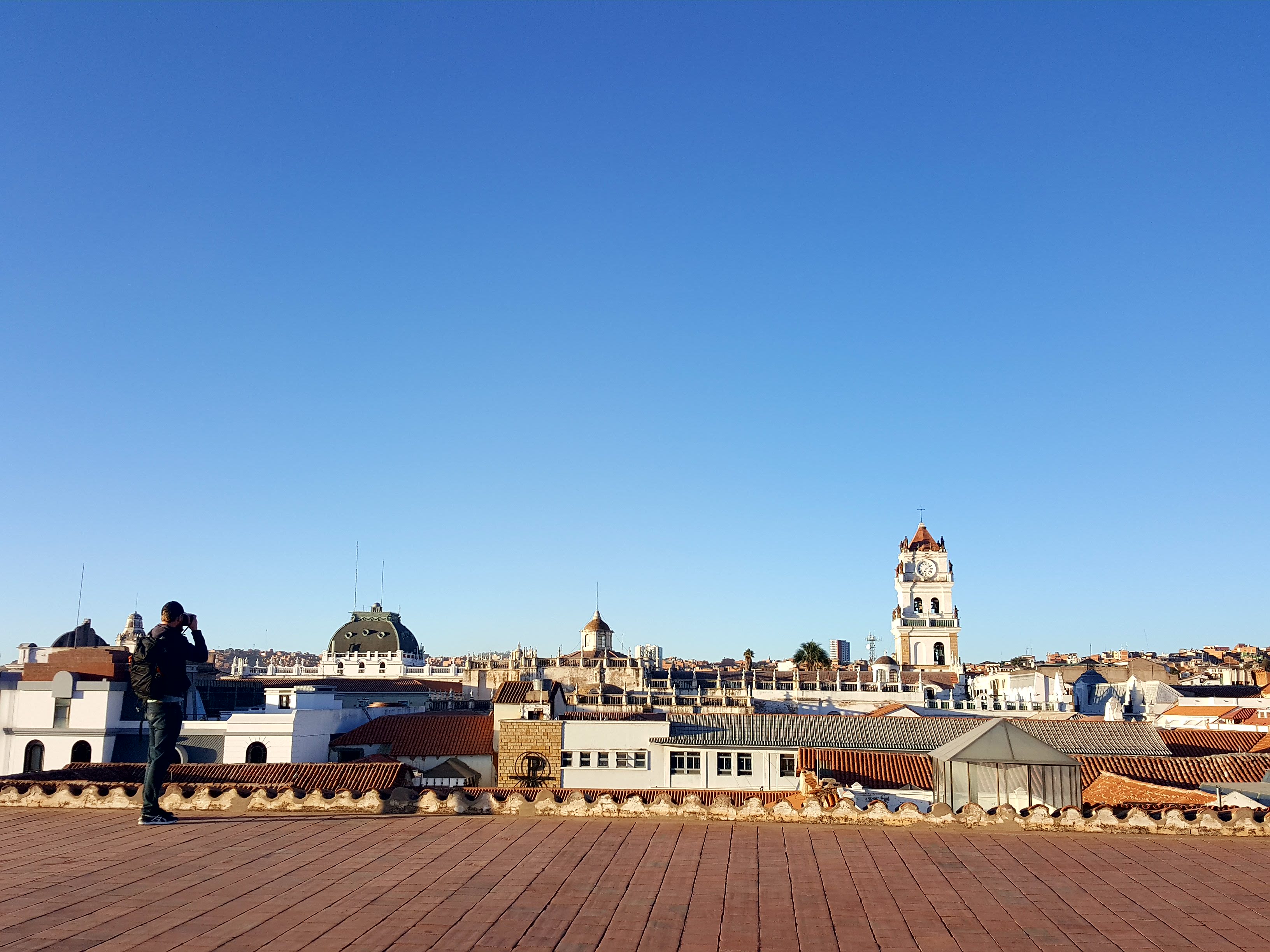
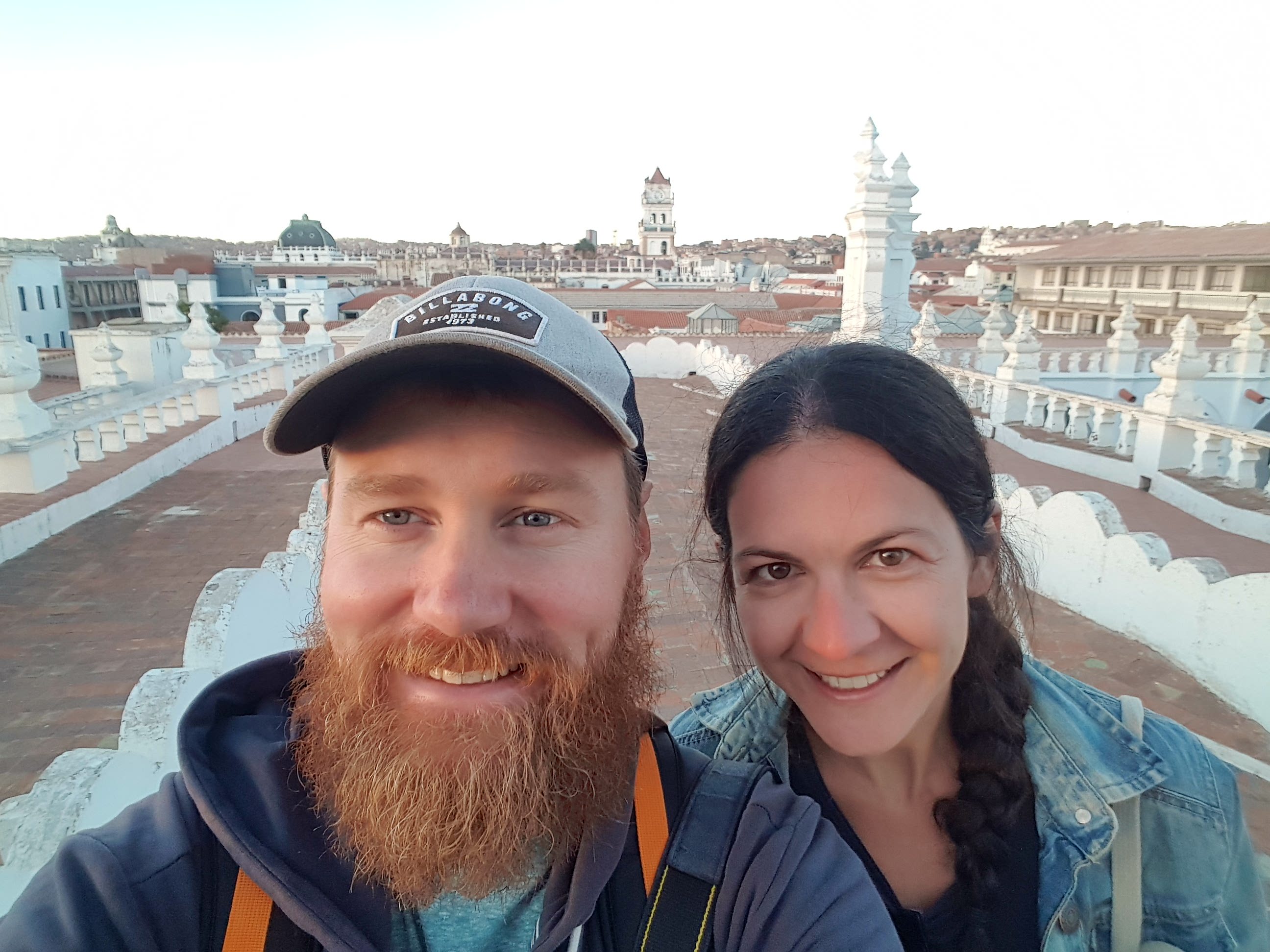
The Mirador (nearby to the Monestary de la Recoleta) is also a beautiful spot although the views are not as good as those from San Felip Neri. There is a cafe at the Mirador which is expensive but is a lovely spot to have a drink. We ended up randomly spending a few hours there chatting to a couple from Germany, Chris and Karen, who have been giving us some great travel tips.
Whilst this normally wouldn’t be on my itinerary, the Cemetery in Sucre is definitelty worth a visit. It is beautiful and quite spiritual.
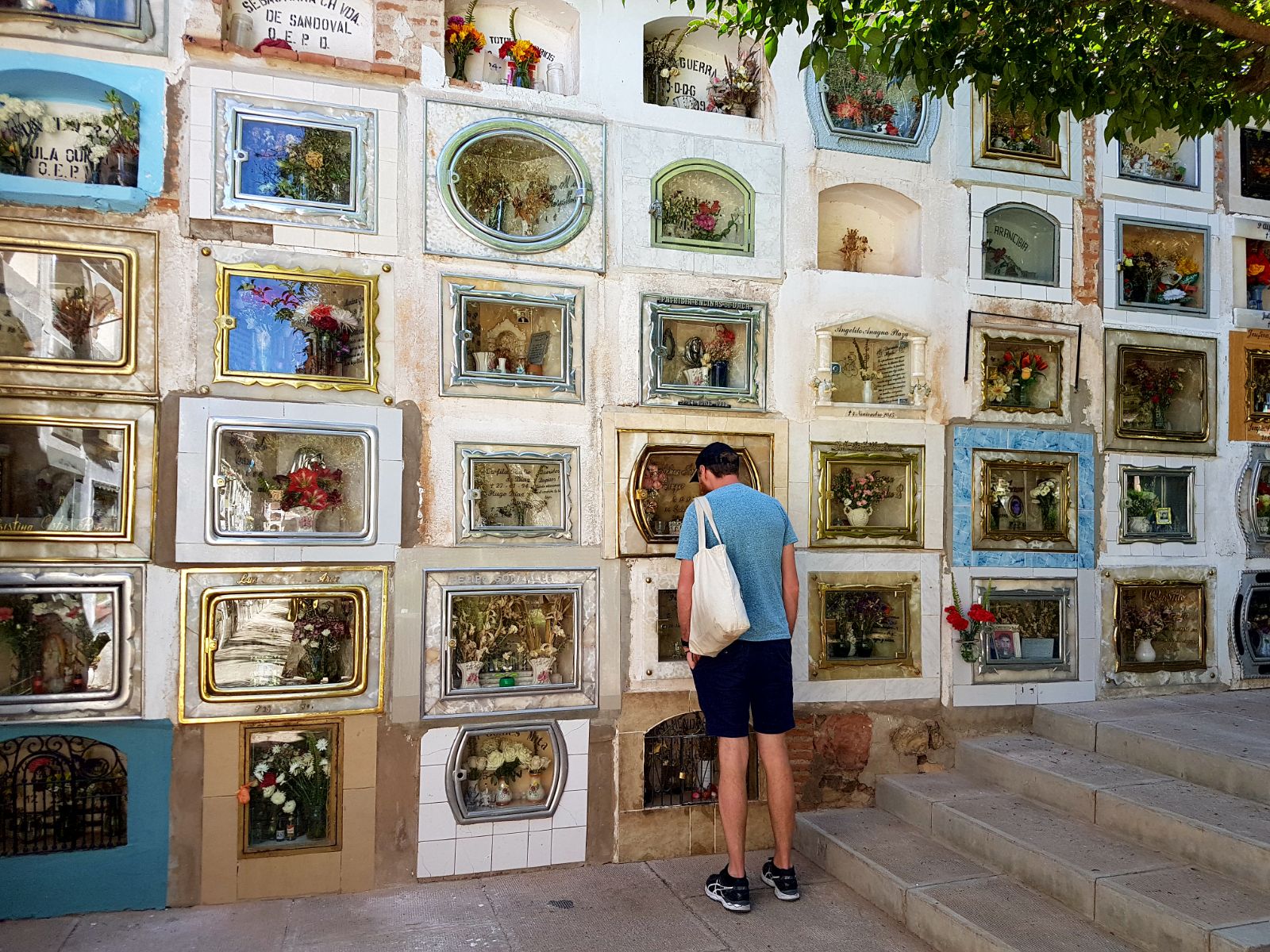
Finally, Sucre has a Dinosaur Park where apparently you can see the largest collection of dinosaur footprints in the world. With our busy schedule we didn’t make it but I imagine it would be a must for dinosaurs enthusiasts.
After two and a half weeks of Spanish lessons I feel that I need to conclude this post with at least a few words in Spanish. Muchas gracias Sucre, eres ciudad bonita. Nuestras tres semanas estababan increíbles. Hasta luego!
Siguiente (next): Lago Titicaca.
